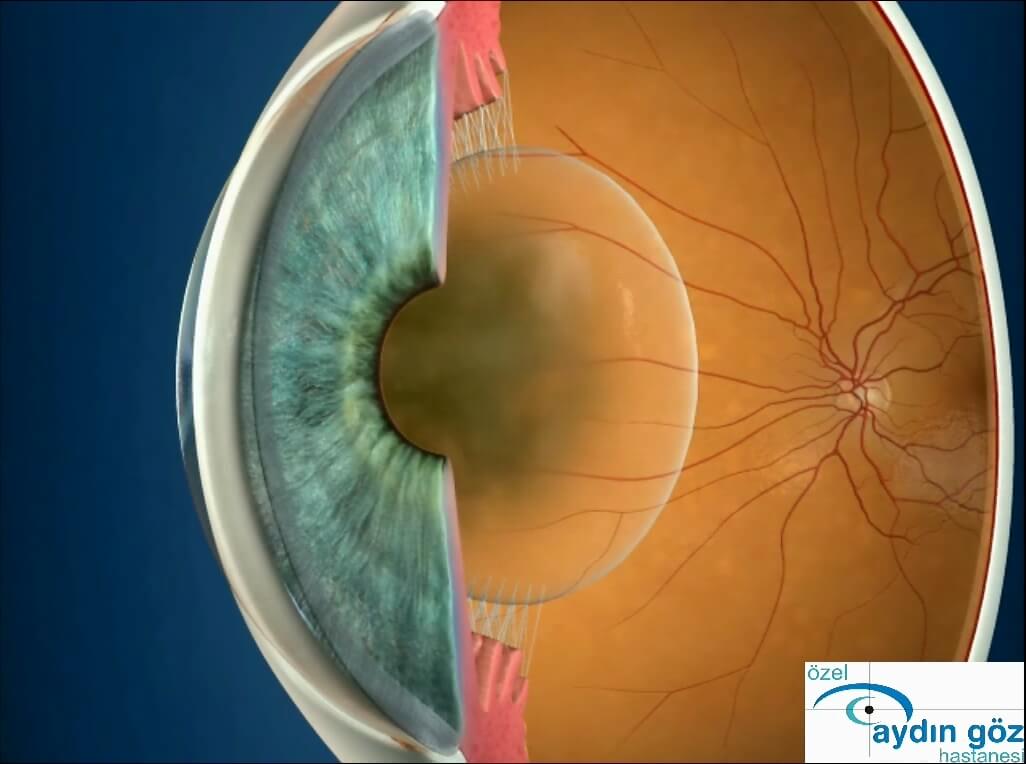A cataract is a clouding of the eye’s natural lens, which lies behind the iris and the pupil.
Cataracts are the most common cause of vision loss in people over age 40 and is the principal cause of blindness in the world.
Cataract Symptoms and Signs
A cataract starts out small and at first has little effect on your vision. You may notice that your vision is blurred a little, like looking through a cloudy piece of glass or viewing an impressionist painting.
A cataract may make light from the sun or a lamp seem too bright or glaring. Or you may notice when you drive at night that the oncoming headlights cause more glare than before. Colors may not appear as bright as they once did.
The type of cataract you have will affect exactly which symptoms you experience and how soon they will occur. When a nuclear cataract first develops, it can bring about a temporary improvement in your near vision, called “second sight.”
Unfortunately, the improved vision is short-lived and will disappear as the cataract worsens. On the other hand, a subcapsular cataract may not produce any symptoms until it’s well-developed.
If you think you have a cataract, see an eye doctor for an exam to find out for sure.
What Causes Cataracts?
The lens inside the eye works much like a camera lens, focusing light onto the retina for clear vision. It also adjusts the eye’s focus, letting us see things clearly both up close and far away.
The lens is mostly made of water and protein. The protein is arranged in a precise way that keeps the lens clear and lets light pass through it.
But as we age, some of the protein may clump together and start to cloud a small area of the lens. This is a cataract, and over time, it may grow larger and cloud more of the lens, making it harder to see.
No one knows for sure why the eye’s lens changes as we age, forming cataracts. But researchers worldwide have identified factors that may cause cataracts or are associated with cataract development. Besides advancing age, cataract risk factors include:
- Ultraviolet radiation from sunlight and other sources
- Diabetes
- Hypertension
- Obesity
- Smoking
- Prolonged use of corticosteroid medications
- Statin medicines used to reduce cholesterol
- Previous eye injury or inflammation
- Previous eye surgery
- Hormone replacement therapy
- Significant alcohol consumption
- High myopia
- Family history
Treatment
Usually, cataracts cannot be viewed from the outside of the eye without proper instruments. If blurred vision or other symptoms are noticed, an eye physician should be visited as soon as possible for an examination. The eye physician examines the lens of the eye with a variety of instruments to determine the type, size, and location of the cataract. The interior of the eye is also viewed with an instrument called an ophthalmoscope to determine if there are any other eye disorders contributing to the blurred vision. When cataracts cause enough loss of sight to interfere with a person’s work, hobbies or lifestyle, it is probably time to remove them. Depending on individual needs, the patient and the ophthalmologist decide together when removal is necessary. Surgery, which can be performed under local anesthesia, is the only effective way to remove the cloudy lens from the eye. Fortunately, cataract surgery is highly successful and over 90% of patients who undergo surgery regain useful vision. It is important to understand that complications, like infection or loss of vision, can occur during or after surgery. In any surgery, a good result cannot be guaranteed. Once the cloudy, natural lens of the eye is removed, the patient needs a substitute lens to focus the eye. These include:Intraocular lenses (IOLs) – permanent lenses implanted inside the eye during the cataract surgery; Cataract glasses – thinner and lighter than they used to be, but still thicker than most ordinary glasses; Hard or soft contact lenses – these can be worn all day, but are taken out at night; Special extended-wear soft contact lenses – appropriate for longer wear. Although the intraocular lens is by far the most popular choice, there are advantages and disadvantages to each type of lens replacement. An ophthalmologist helps the patient decide which lens or combination of lenses is best suited to their lifestyle and eye health.






